Abstract
Previous studies in our laboratory have demonstrated that the development of antiviral activity of human leukocyte interferon (IF) in nasal epithelial cells is time and concentration dependent and that the loss of intranasally applied human leukocyte IF is rapid. The present studies compared the activity of IF applied intranasally either by nasal drops or by a saturated cotton pledget. Adult volunteers had IF applied to an area of nasal mucosa (2 by 2 cm2) either by repeated nose drops or by a saturated cotton pledget that was applied to the nasal mucosa and left in place for 1 h. Nasal epithelial cells scraped from the area of application, as well as the control, untreated side of the same volunteers, were challenged with vesicular stomatitis virus. No significant reduction in mean virus yield was found in volunteers who received 80,000 U by nose drops. Significant reduction (P < 0.025) in mean virus yield was found in cells obtained 4 h after 80,000, 50,000, or 20,000 U was applied by cotton pledget or in volunteers pretreated with oral antihistamines prior to receiving 80,000 U by nose drops. These experiments indicate that nasal epithelial cells can be made antiviral in vivo by application of human leukocyte IF. However, practical usefulness of human leukocyte IF for prophylaxis against respiratory viral infections may depend on the method of local application.
Full text
PDF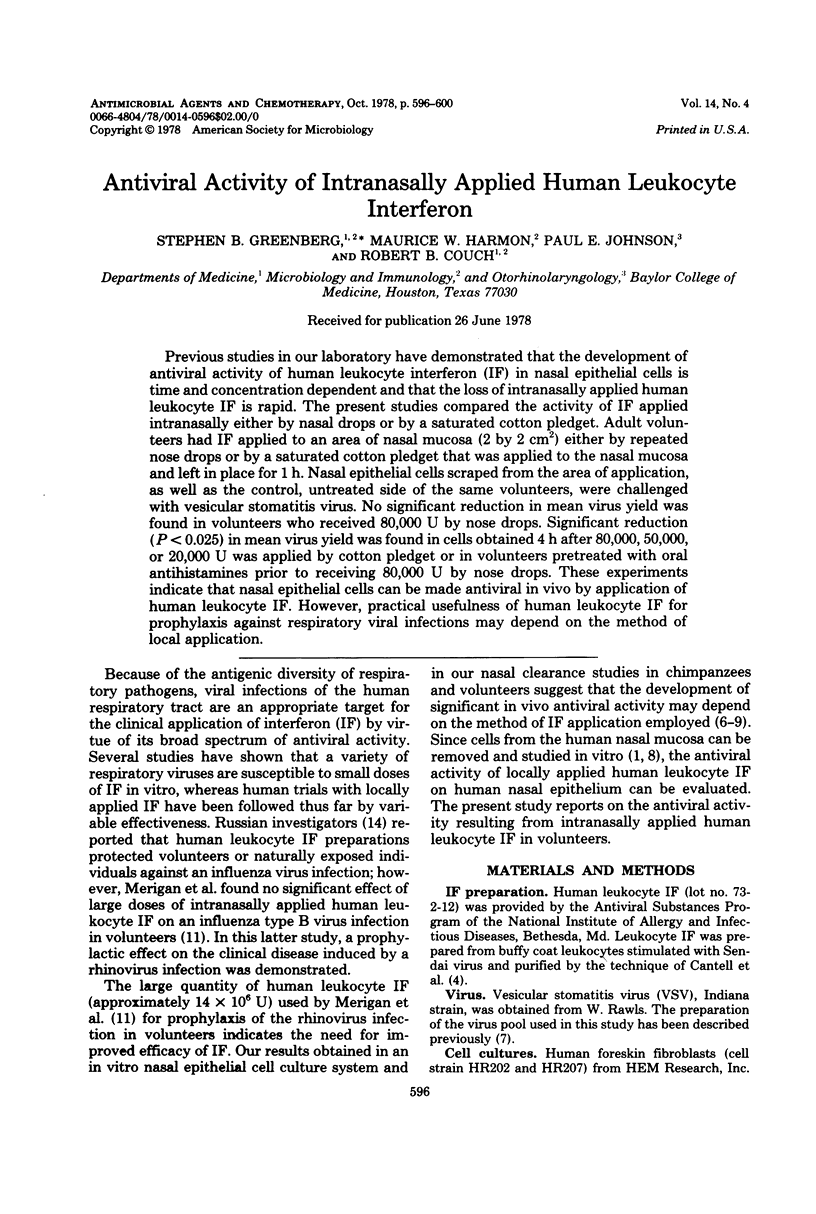
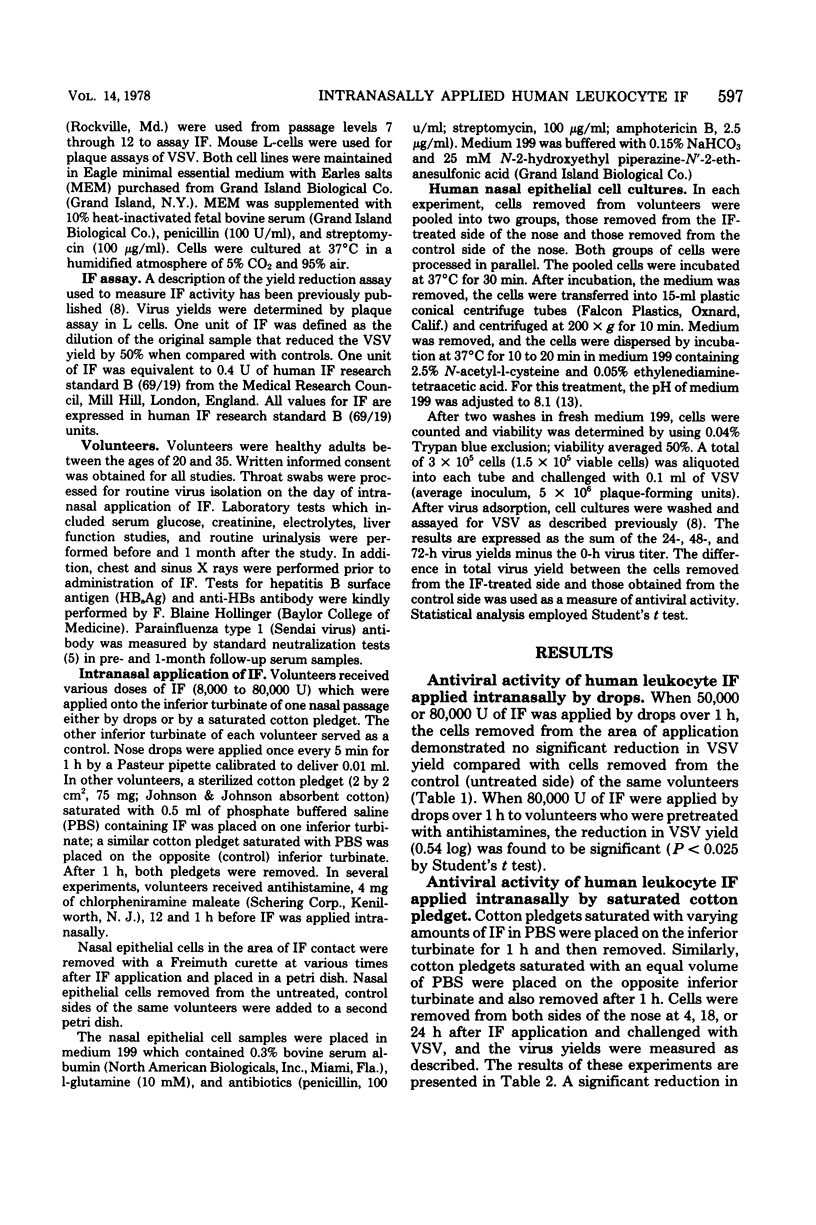
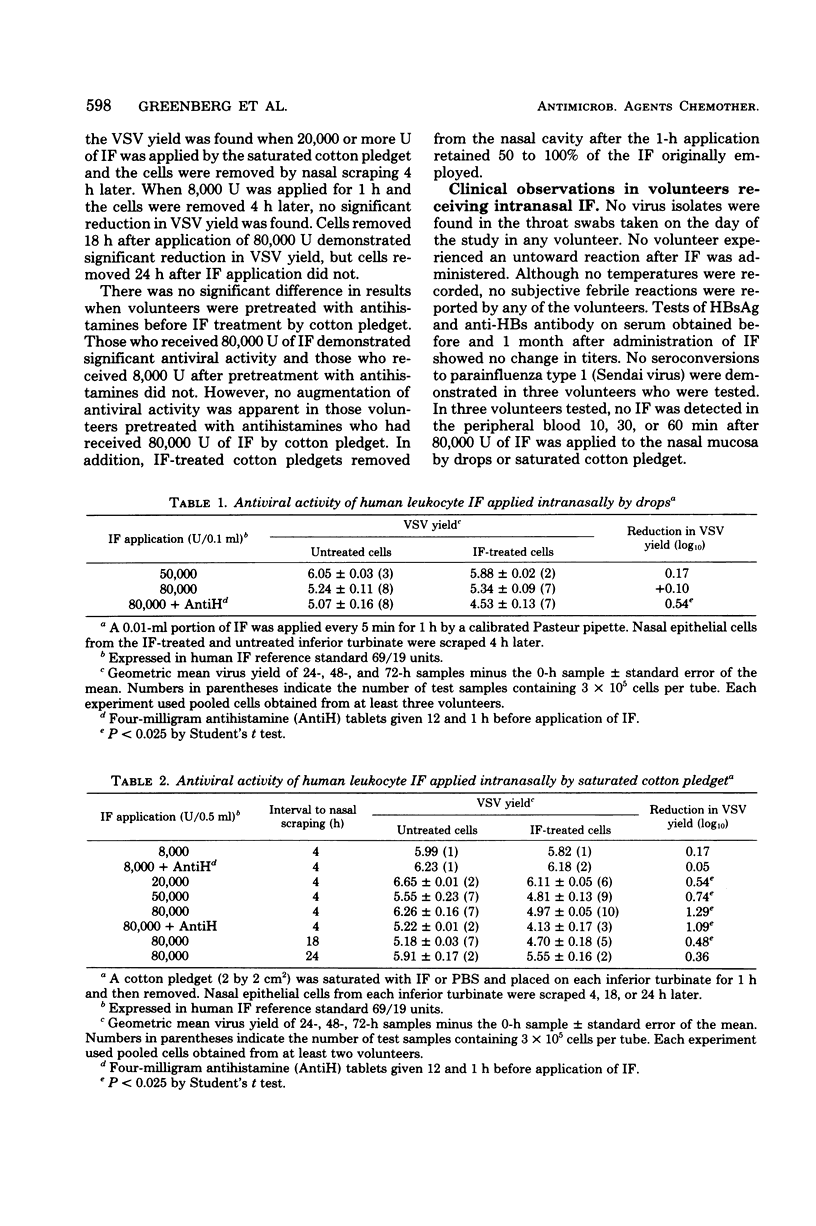
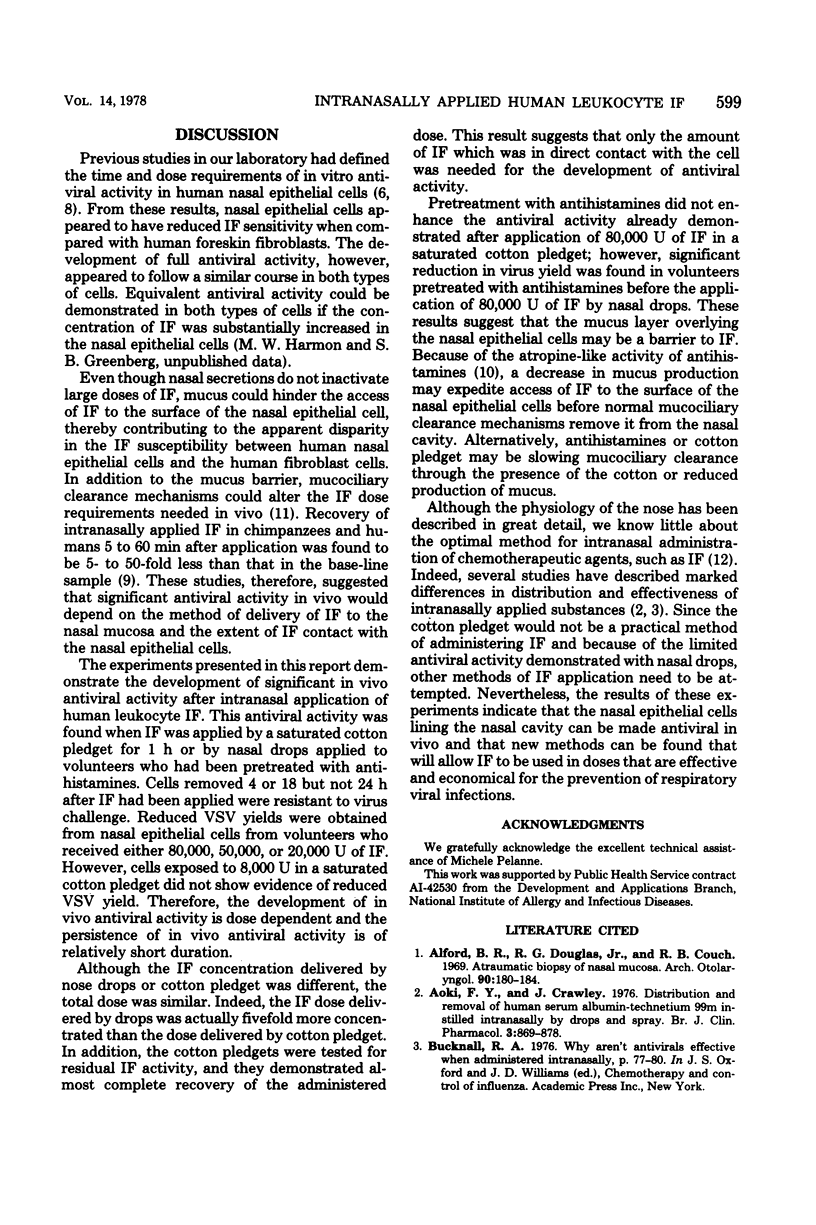
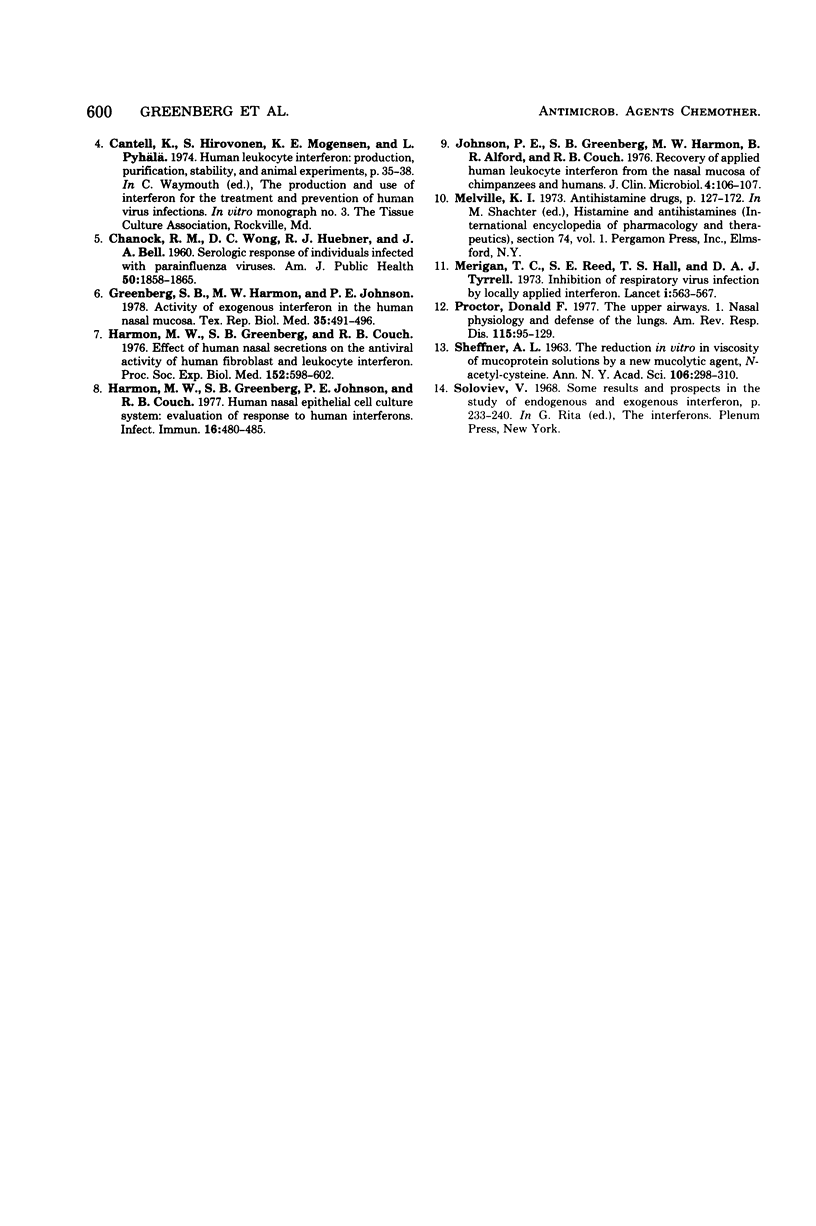
Selected References
These references are in PubMed. This may not be the complete list of references from this article.
- Alford B. R., Douglas R. G., Jr, Couch R. B. Atraumatic biopsy of nasal mucosa. Arch Otolaryngol. 1969 Aug;90(2):180–184. doi: 10.1001/archotol.1969.00770030182018. [DOI] [PubMed] [Google Scholar]
- Aoki F. Y., Crowley J. C. Distribution and removal of human serum albumin-technetium 99m instilled intranasally. Br J Clin Pharmacol. 1976 Oct;3(5):869–878. doi: 10.1111/j.1365-2125.1976.tb00640.x. [DOI] [PMC free article] [PubMed] [Google Scholar]
- CHANOCK R. M., WONG D. C., HUEBNER R. J., BELL J. A. Serologic response of incividuals infected with para influenza viruses. Am J Public Health Nations Health. 1960 Dec;50:1858–1865. doi: 10.2105/ajph.50.12.1858. [DOI] [PMC free article] [PubMed] [Google Scholar]
- Cantell K., Hirvonen S., Mogensen K. E., Pyhälä L. Human leukocyte interferon: production, purification, stability, and animal experiments. In Vitro Monogr. 1974;(3):35–38. [PubMed] [Google Scholar]
- Greenberg S. B., Harmon M. W., Johnson P. E. Activity of exogenous interferon in the human nasal mucosa. Tex Rep Biol Med. 1977;35:491–496. [PubMed] [Google Scholar]
- Harmon M. W., Greenberg S. B., Couch R. B. Effect of human nasal secretions on the antiviral activity of human fibroblast and leukocyte interferon. Proc Soc Exp Biol Med. 1976 Sep;152(4):598–602. doi: 10.3181/00379727-152-39448. [DOI] [PubMed] [Google Scholar]
- Harmon M. W., Greenberg S. B., Johnson P. E., Couch R. B. Human nasal epithelial cell culture system: evaluation of response to human interferons. Infect Immun. 1977 May;16(2):480–485. doi: 10.1128/iai.16.2.480-485.1977. [DOI] [PMC free article] [PubMed] [Google Scholar]
- Johnson P. E., Greenberg S. B., Harmon M. W., Alford B. R., Couch R. B. Recovery of applied human leukocyte interferon from the nasal mucosa of chimpanzees and humans. J Clin Microbiol. 1976 Jul;4(1):106–107. doi: 10.1128/jcm.4.1.106-107.1976. [DOI] [PMC free article] [PubMed] [Google Scholar]
- Merigan T. C., Reed S. E., Hall T. S., Tyrrell D. A. Inhibition of respiratory virus infection by locally applied interferon. Lancet. 1973 Mar 17;1(7803):563–567. doi: 10.1016/s0140-6736(73)90714-9. [DOI] [PubMed] [Google Scholar]
- Proctor D. F. The upper airways. I. Nasal physiology and defense of the lungs. Am Rev Respir Dis. 1977 Jan;115(1):97–129. doi: 10.1164/arrd.1977.115.1.97. [DOI] [PubMed] [Google Scholar]
- SHEFFNER A. L. The reduction in vitro in viscosity of mucoprotein solutions by a new mucolytic agent, N-acetyl-L-cysteine. Ann N Y Acad Sci. 1963 Mar 30;106:298–310. doi: 10.1111/j.1749-6632.1963.tb16647.x. [DOI] [PubMed] [Google Scholar]


